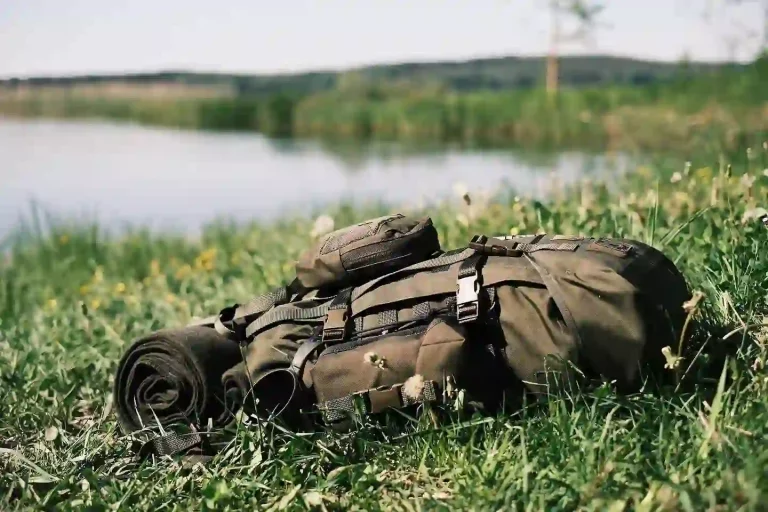A Bugout Bags is a great way to organize survival gear for emergency situations. It can be easy to get carried away and fill your bug out bag with junk, but it’s essential to have quality gear that will last.
One strategy is to use a primary BOB for each family member, then fill secondary BOBs with additional equipment. This will ensure that if a family member is separated they will have essential survival equipment with them.
Water
Having water is a top priority in any bugout bag. Without it, cognitive and physical functioning decline rapidly. It can also be heavy and expensive, which makes it important to plan ahead and regularly check your supply.
Premade bugout bags can save you time and money by combining many of the essentials in one package. They’re also designed with your environment and survival scenario in mind. Having a bug out bag that’s too big for your environment will waste space and weight, while having one that’s too small will leave out essential items that could prove crucial in an emergency situation.
If you are looking to buy a bug out bag for yourself or your family, make sure it includes personal hygiene products like soap, toothbrushes, and wet wipes. In emergency situations, disease can spread quickly and hygiene can be hard to maintain. It’s also a good idea to include a few bottles of water and a first aid kit. You should also consider including a survival blanket in your bug out bag. This will help you stay warm if you’re displaced from your home or have to evacuate in a hurry.
Food
Bug out bags (also known as go bags, grab bags, 72 hour bags, and other names) are meant to be deployed quickly in the event of a natural disaster or other large scale emergency. They should contain everything you need to survive in the short term, typically in a backpack that can be easily carried.
Everyone’s BOB will be slightly different, but there are a few key items that everyone should include. These are: Environmental Protection (Clothing), Water Purification, Food Supplies, Sleeping Gear and First Aid.
Other things that are helpful in a BOB include hygiene products like soap, and a pair of sturdy work gloves for keeping clean. Consider a respirator too, as most situations will release contaminants into the air that can harm you or your loved ones.
While it is best to build your own BOB, a premade bug out bag can save you time by allowing you to skip the research, testing, and buying and stowing of gear. However, it’s important to choose a quality premade bug out bag, as you don’t want the bag to fall apart on you when you need it most.
Shelter
Having shelter is one of the most important survival items to have. It protects you from the elements, predators, and pests. This is why best bugout bags include a variety of shelter options like tents, tarps, and blankets. You can use these for protection, warmth, or a place to rest while you look for a more permanent home.
Bugout bags are a great tool for families to prepare for disasters or unexpected events that may require you to leave your home. They are ideal for family members of all ages, including children and infants. However, when preparing bug out bags for your family, it is important to avoid common mistakes that can lead to unneeded weight or gaps in essential equipment.
One common mistake is creating a bug out bag to get you through a specific timeline. This rarely works in real life, and it can result in unnecessary gear, dead weight, or major gaps in necessary tools. Instead, design your bug out bag for the environment and situations you are most likely to face.
First Aid
A good survival kit is essential if you find yourself in an emergency situation, and first aid can make a huge difference when it comes to saving someone’s life. By learning how to provide basic first aid you can stabilize a patient until emergency medical services can arrive.
A survival kit is also useful for everyday situations, such as a power outage or a natural disaster. You may even find yourself needing to evacuate at a moment’s notice, and having everything you need in one place is much more convenient than trying to gather it all from your home.
The best way to get the most out of your bugout bags is to design them with your specific environment and scenario in mind. Don’t waste time planning for unlikely scenarios, as they will be a lot more likely to happen than you think, so be sure to focus on the most common. You can then dial-in the less common needs once you have your base set.
Communication
Bug Out Bags, also known as Go bags, Go Kits, Grab Bags, 72-hour bags, or BOBs are portable emergency disaster survival kits that are meant to be used if you need to evacuate your home in the event of a natural disaster or manmade catastrophe. They are typically stored in backpacks for ease of transportation.
Preparing a bug out bag can be expensive. Luckily, there are many ways to save money on your bugout gear, such as purchasing premade bugout kits. These kits utilize bulk buying power to get great prices on quality gear, like mylar blankets. They also keep you from ordering crap gear or unnecessary stuff that can waste space in your pack.
Some of the best items to include in a bugout bag are flashlights, water, first aid supplies, and personal communication tools. You should also include a reflective blanket for warmth and visibility, a signal mirror for finding friends or rescuers, and a whistle to signal for help. Having a survival tarp or survival bandana in bright colors can be helpful as well. Consider a personal locator beacon, but don’t bother with flares, as they aren’t worth the extra weight.
